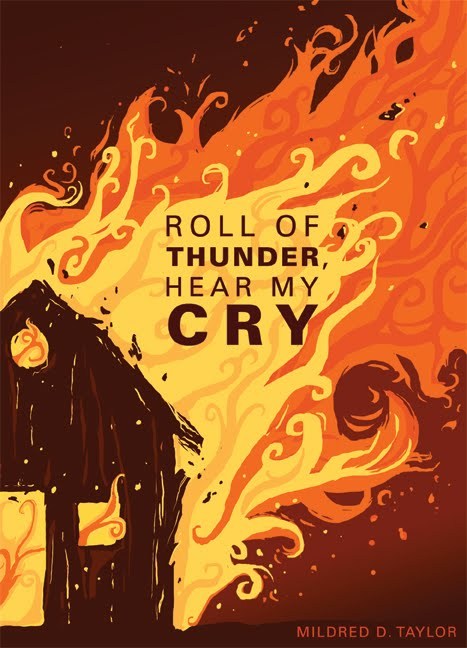
Roll of Thunder, Hear My Cry by Mildred D. Taylor tells the story of a black farming family attempting to cope with racism in Mississippi during the Great Depression. The viewpoint character is Cassie Logan, a 9-year-old schoolgirl who is just starting to realize the depth of the bigotry in her community and how dangerous it is to her and her loved ones.
Cassie and her brothers Stacey, Little Man and Christopher-John have been partially insulated from the worst racism because their mother is educated and progressive and because their family owns their own land. Consequently, they have money and status that most other blacks in their community cannot hope to attain.
But local white supremacists have started brutally attacking black men they see as having stepped out of line, and an acquaintance of the Logan family is nearly burned to death and left disabled and horribly disfigured.
Because this horror is new to Cassie, her revelations are revelations to the reader. And as a result of this being a new, difficult experience for the narrator, much of the novel is an effective exploration of the ways racism harms individuals and poisons entire communities.
The most poignant scene for me is when the children finally receive textbooks. The emotional core of the scene is set up right from the beginning of the book when Little Man is described as: “Always meticulously neat, six-year-old Little Man never allowed dirt or tears or stains to mar anything he owned.” The children’s teacher, Miss Crocker, tells the excited classroom that they have received “new” books and tells the students that they are all fortunate to have received them. But the books are beat up, scribbled on, and filthy from years of use and abuse. Little Man pushes his book away and asks for one that isn’t dirty. The teacher scolds him and accuses him of being uppity.
Furious at being told he doesn’t deserve anything better than a broken book, Little Man throws the book down and stomps on it, and the teacher gets ready to whip him in front of the class. Cassie, angry at her brother’s mistreatment, opens the book and finds proof that the books had been read for a decade by white students and deemed suitable for the black students only when they had reached “very poor” condition and that the black student who last received the book was classified as a “nigra”:
“S-see what they called us,” I said, afraid she had not seen.
“That’s what you are,” she said coldly. “Now go sit down.” (Taylor 26)
Cassie rejects her book, too, and Crocker beats both her and her brother in front of the class. In its own way, this scene is just as painful as the scene where Cassie visits her horrifically burned neighbor. Cassie and her brother feel intensely betrayed by Crocker – first by her trying to pass off old, abused books as new treasures, and then by her insisting that they should accept racial slurs as being merely descriptive rather than the dehumanizing insults they clearly are.
Most every reader who’s gone through school has seen a teacher or other authority figure act as a bully and strip a child of dignity and agency, and it’s both painful and relatable to read about it happening to Cassie and Little Man. Taylor does an excellent job throughout the book of grounding racist incidents in these kinds of emotionally authentic, easily relatable human details, and it lends the book a freshness and urgency.
Works Cited
Taylor, Mildred D. Roll of Thunder, Hear My Cry. New York: Puffin Books, 2004. Electronic.
Leave a Reply
You must be logged in to post a comment.